As promised, I’m posting a follow-up to my earlier post, Fine Motor Morning Work Bins. In that post I gave you a peek inside my stations drawers and today, I’m letting you have a peek at what these activities actually looked like in action those first few days of school.

THE STATIONS
If you remember correctly from the first post, these stations are what I do first thing in the morning as my students are wandering in, making lunch choices and using the restroom. They only last for maybe 15-20 minutes. I have 12 drawers that are equipped to hold different activities. There are no more than two students at any one drawer, and students use only one drawer each morning.
Many of you asked if I monitored the drawers, set them out, took care of them . . . you know! Basically they wanted to know if they were a bunch of work for me to manage. I’m happy to say that it took about four days, but now my students know to come in, check the pocket chart for their name, pull out the drawer and find a spot to work. When the stations are done, they have been trained on how to put items back as they found them, and return the drawers in the correct order.

Really, it frees up my time to take attendance, deal with lunch money and notes and handle any first thing in the morning questions or concerns that come up. In the meantime, they are engaged, getting bathroom breaks and drinks out-of-the-way and practicing skills they desperately need. If a student comes in late (because that never happens . . .right!), they know to find their partner and jump right into the activity.
This post does contain some affiliate links for your shopping convenience. I do receive a small commission when someone purchases an item after clicking on a link. These commissions help with the cost of maintaining this blog and allow me to continue to bringing you valuable content, activities and ideas.
THE ACTIVITIES IN ACTION
Drawer 1: PAPER PUNCHES
Definitely one of the quietest drawers and most challenging drawers, paper punches are a great fine motor activity. Students really have to work to get the rhythm and coordination for punching, but it’s great to hear them say, ‘I got it. I’m gonna punch this whole paper up!’
Some start out two-handed, but usually they are on to one-handed punching in no time.
Drawer 2: POP BEADS
Super HUGE hit! My students love these beads. If you’ve never tried pop beads . . . what are you waiting for?
These little beads really work those pincers. It takes a bit of hand-eye coordination . . .
I have been told that if you stick your tongue out it makes it easier to concentrate.
They loved seeing how many they could get together and how long they could make their bead chains.
Drawer 3: Spirograph
Spirographs ended up being a real confidence booster for so many kids. They were delighted with the outcome of their efforts.
With a little coordination, they can make some pretty cool designs which they loved being able to take home with them.
Drawer 4: Pokey Pin Pictures
I’ve been using pokey pins for years and they never fail. For this drawer, I gave students the choice of a couple of designs. I wanted something very basic to get them started on pokey pins.
Most kids were so happy about doing them that they did both designs. Again, these are a great activity for pincer skill building and take a bit of hand-eye coordination. I had so many questions about pokey pin activities and where I get my resources when I posted last week so I wanted to make sure I gave a shout out to Krissy Miner from Mrs. Miner’s Monkey Business. I don’t make pokey pin activities. For the cost of purchasing clipart and the time it takes, it’s just easier for me to get her awesome differentiated packs. You can check them out by clicking on the picture above or HERE.
Drawer 5: Therapy Putty
This is a good one and my occupational therapist friends approve. Currently I have little pony beads hidden in my therapy putty which has been great.
My kinders love using this putty so much that I think I may keep it in the bins for a while and just change up what they search for to make it interesting. I have some small plastic coins I may use or maybe real ones. I prefer to use real but they may make the putty dirty. I’ll keep you posted and let you know what I decide.
Drawer 6: Nuts and Bolts
I love that these are real and not the plastic ones. I mean, I am sure the plastic ones would work just fine, but the real ones made such a big impression on my students.
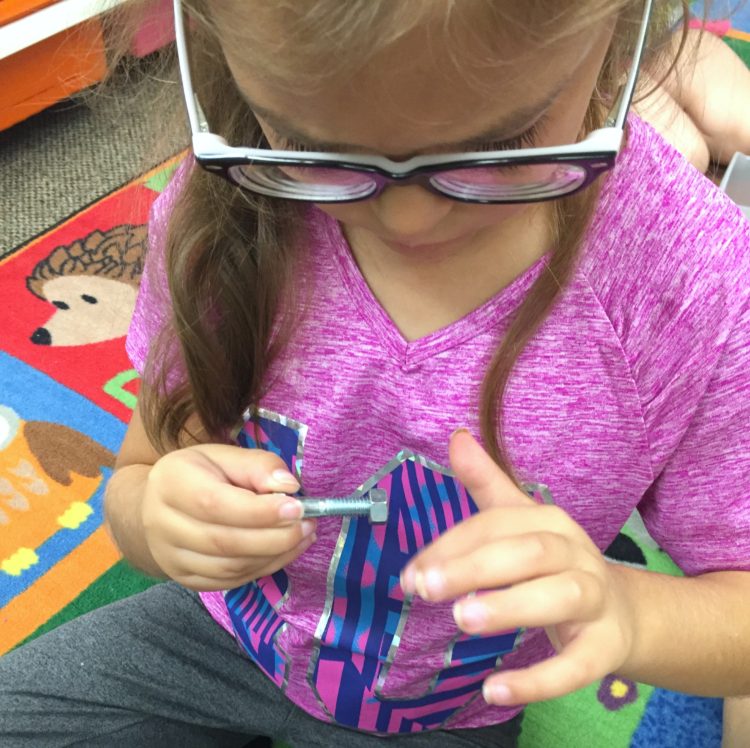
I heard them playing that they were ‘tool guys.’
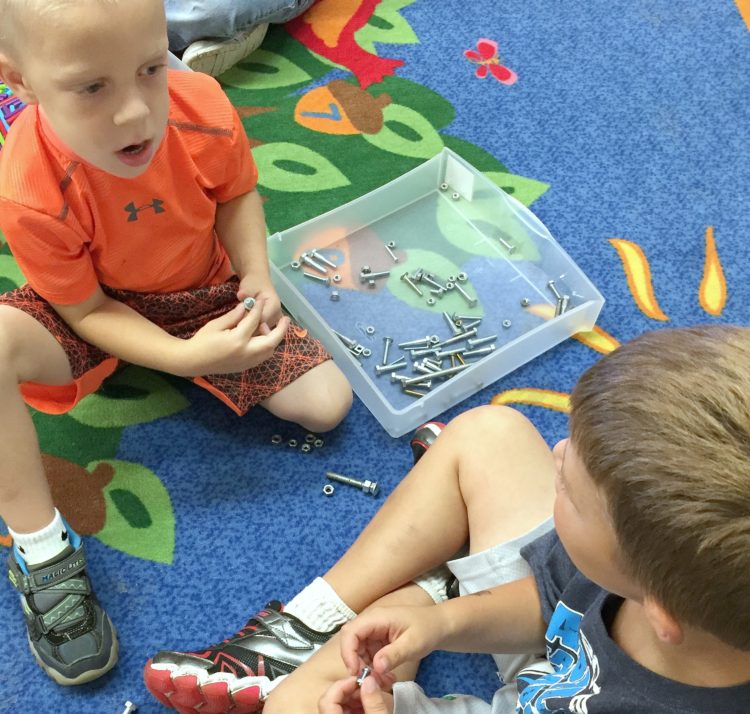
It’s really been music to my ears to hear so much ‘play’ coming out of these morning work bins as students use these fine motor activities. Anytime I can add play, it’s a bonus.
Drawer 7: Play-doh Extruder and Scissors
Face it! Nothing is better than play-doh. I’m always so surprised when parents tell me they hate it and often do not offer it to their child, because it’s so messy. Yep. It’s messy, but my students have been so good about learning to clean up after themselves. So, if they are willing to clean up, I’m going to offer it as much as possible.
It takes some serious muscles to work those extruders and when they finally have it all the way out, I have them cut the play-doh up into tiny pieces. The extra resistance that play-doh offers lends itself to building that strength that we desperately want them to have in their hands for writing.
Drawer 8: Tennis Ball Munchy Mouth Characters
So fun and so funny!!!! Did you know that when you open your Tennis Ball Munchy Mouth up to eat some beads, he sounds just like cookie monster eating a cookie. Nam! Nam! Nam! This was so fun for my students, and I love the added counting skills that were used by utilizing dice with it.
Drawer 9: Links
Putting links in these drawers is a perfect way to front load my students’ experience with this tool that they will use all year-long. We link numbers, the alphabet, words for sentences and letters for words. By giving them a chance to play with them and figure them out now, I have much better results in the long run.
Drawer 10: Fill Your Lily Pad
Here’s a game that you will see many variations of throughout the year. Just change up the manipulative and it makes it a completely new game. You decide the number of frogs to put out in the drawer, students roll the dice and add that many frogs to their lily pad. They must use the tongs to pick up the frogs one at a time. If for any reason a frog falls off the lily pad or gets drops in transferring, it is lost for that turn. When all the frogs have been moved to a lily pad, count all your frogs to see who is the winner!
Drawer 11: Fancy Scissors and Astrobrights Papers
It’s always more fun with fancy scissors. These were perfect. Students were engaged and interested in the different designs all the scissors made. I’ll use all the tiny little pieces later on for a craft project.
Drawer 12: Straws and scissors
This proved to be challenging for many of my students. Getting the rhythm of cutting the plastic instead of just bending the straw was tough. Once they got the feel for it and understood how to cut a close to the middle of the scissors as possible, I had straw pieces flying everywhere. Which of course, they then had to pick up with their little fingers. Doubling the fine motor activity with clean up is always a bonus.
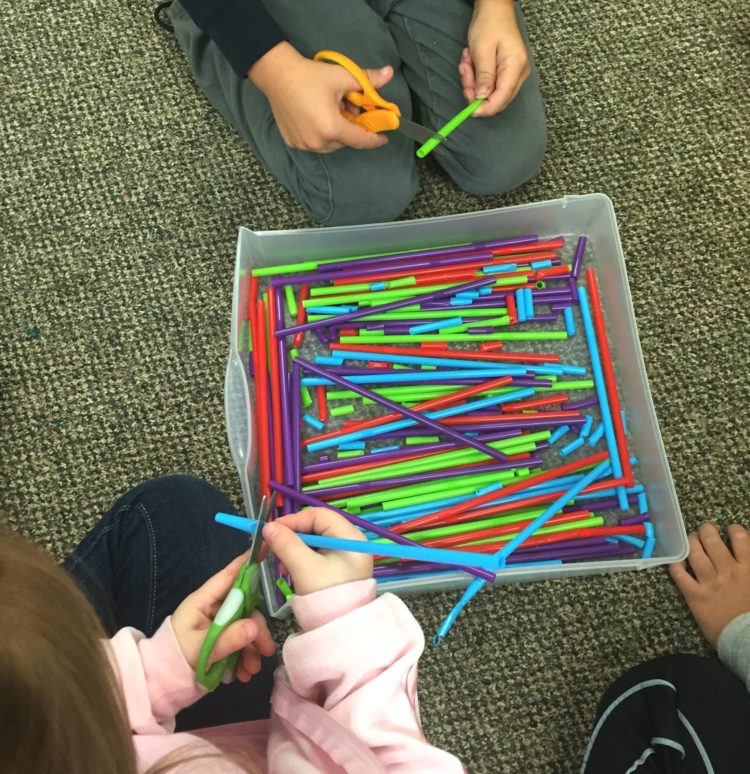
And so that’s it for my first of the year Morning Work Stations. I had a bunch of questions about whether these stations would be the same all year-long. I just wanted to make it clear that my Morning Stations evolve as my students progress throughout the year. These stations last 12 days. The next set will be different. Morning stations are not always strictly fine motor, but I do like to have as much fine motor work in there as possible. I am already working on my next set and will be posting them soon so make sure you stop back. If you have questions regarding where I purchased any of the items above, I have included affiliate links, so you can simply click on any picture and it should give you that information.
If you missed my original post about Fine Motor Morning Work Stations, you can find it HERE or by clicking the picture below. It has a bit more detail regarding how everything works, rotations and all the nitty-gritty.
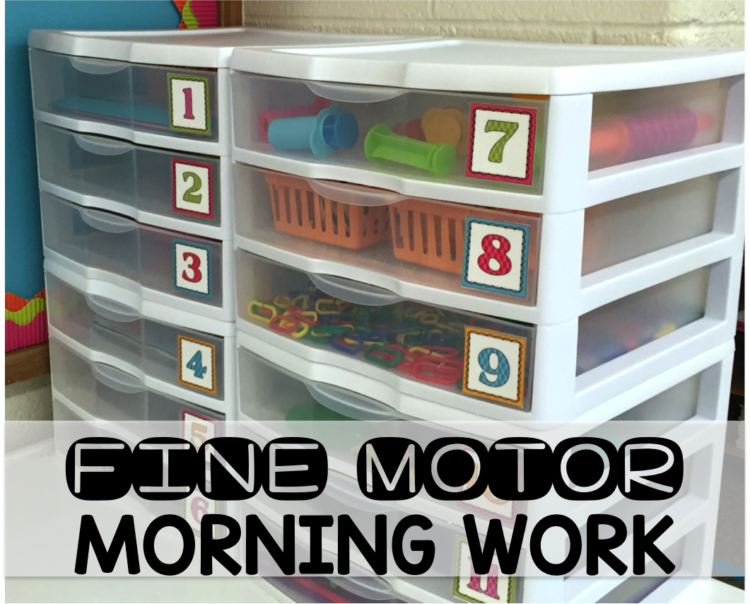
UPDATE: After spending the last year posting about morning work and presenting workshops to teachers across the country, I have had numerous special requests from teachers who required more than just 12 stations, ‘I Can’ sheets with standards and skills indicated and who had so many great questions. Taking all those requests and questions, I have put together a Getting Started With Morning Stations packet to meet all those requests and answer questions. If you’d like to learn more about this packet, just click HERE or on the picture below:


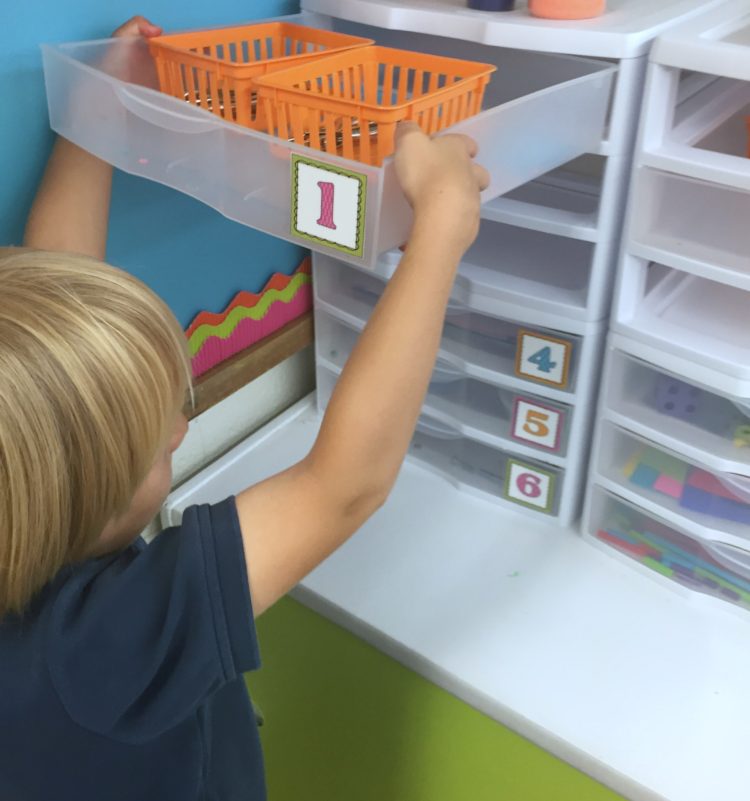
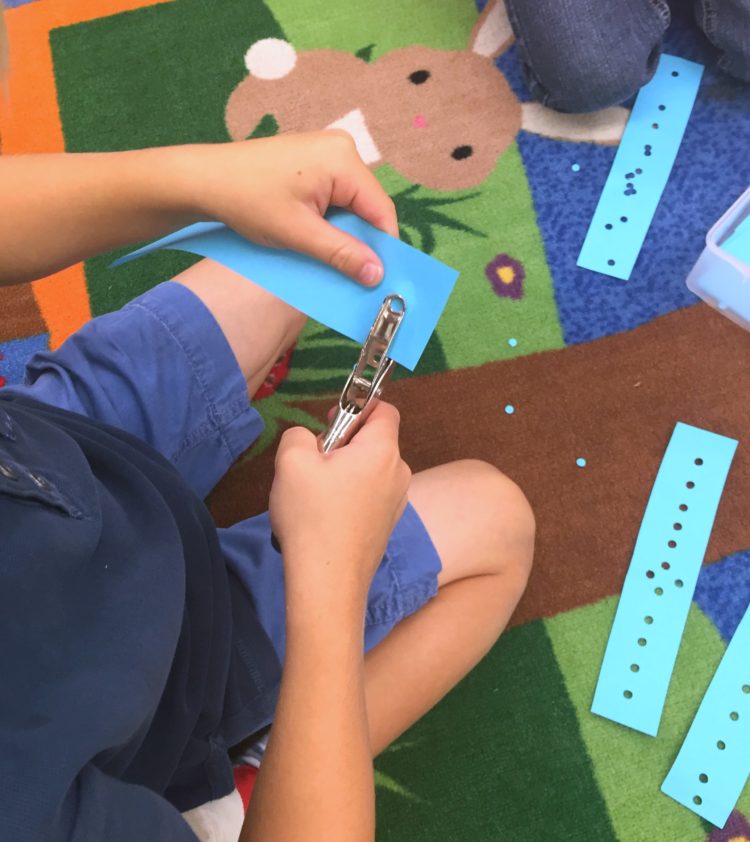
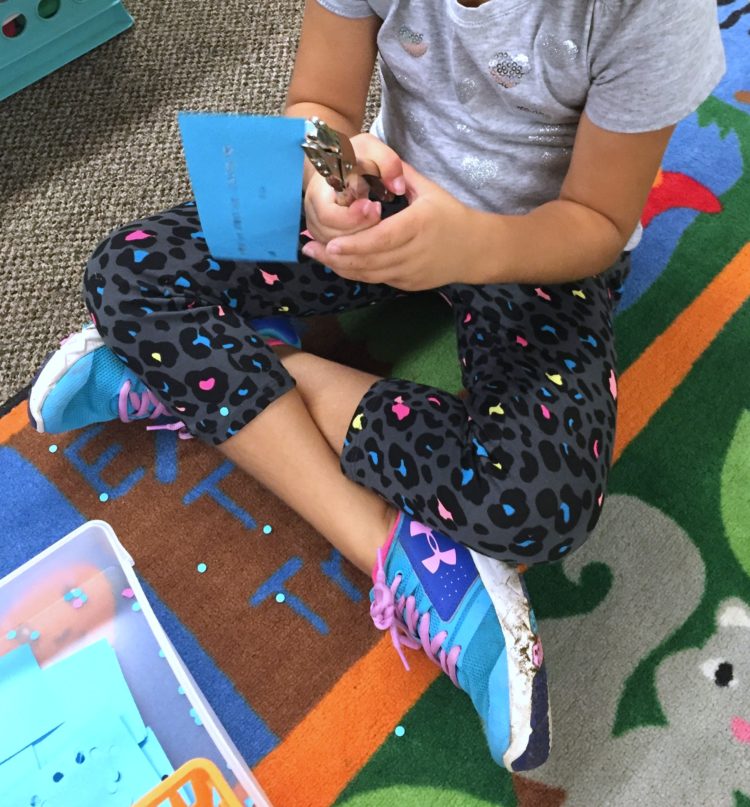

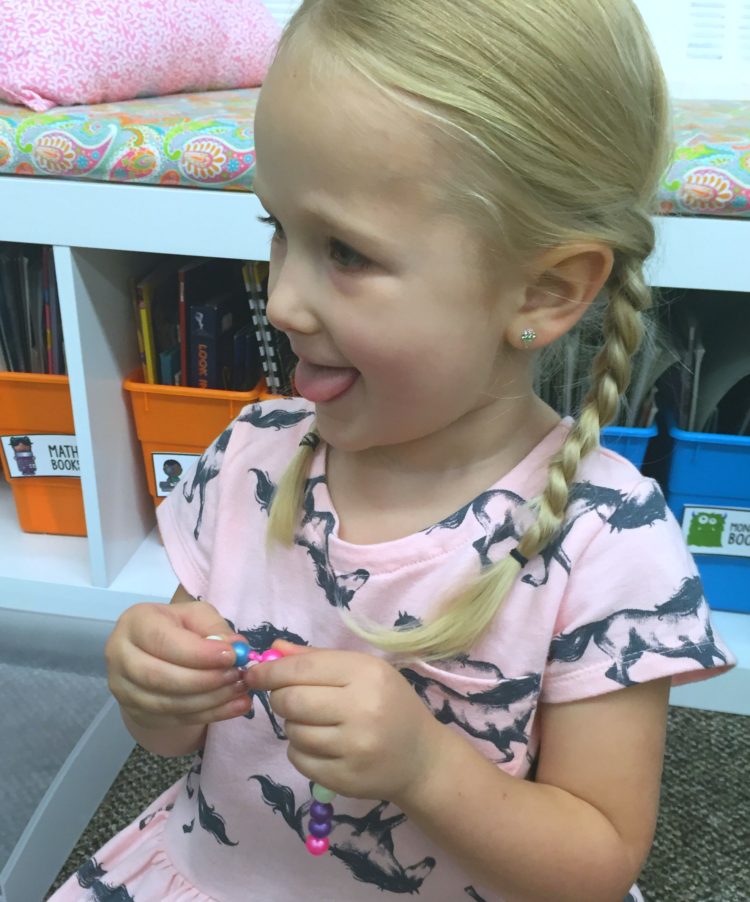

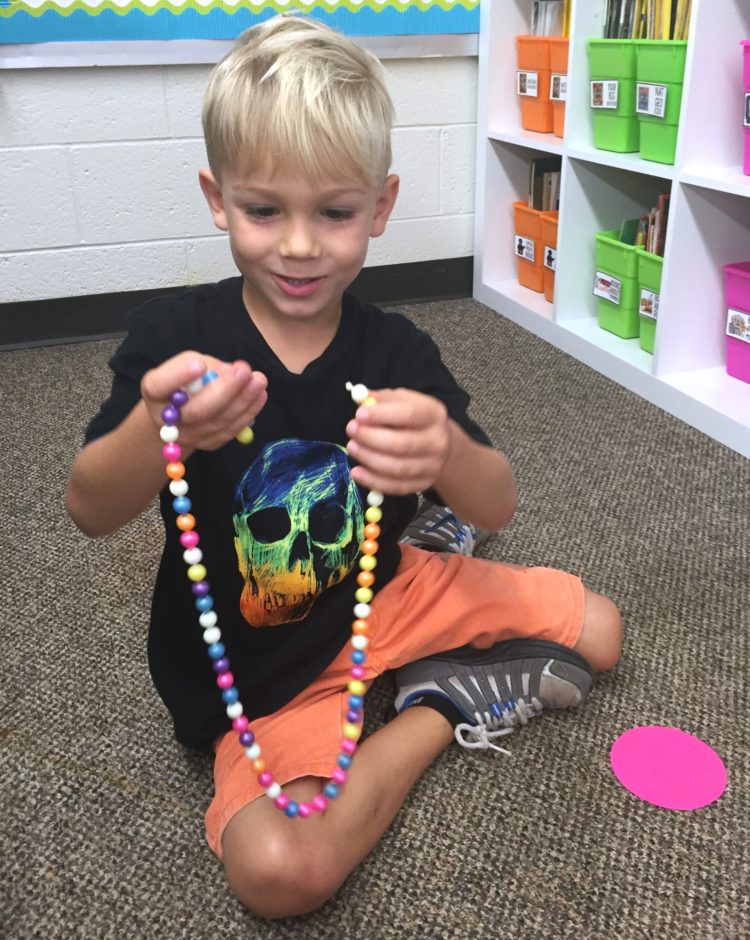


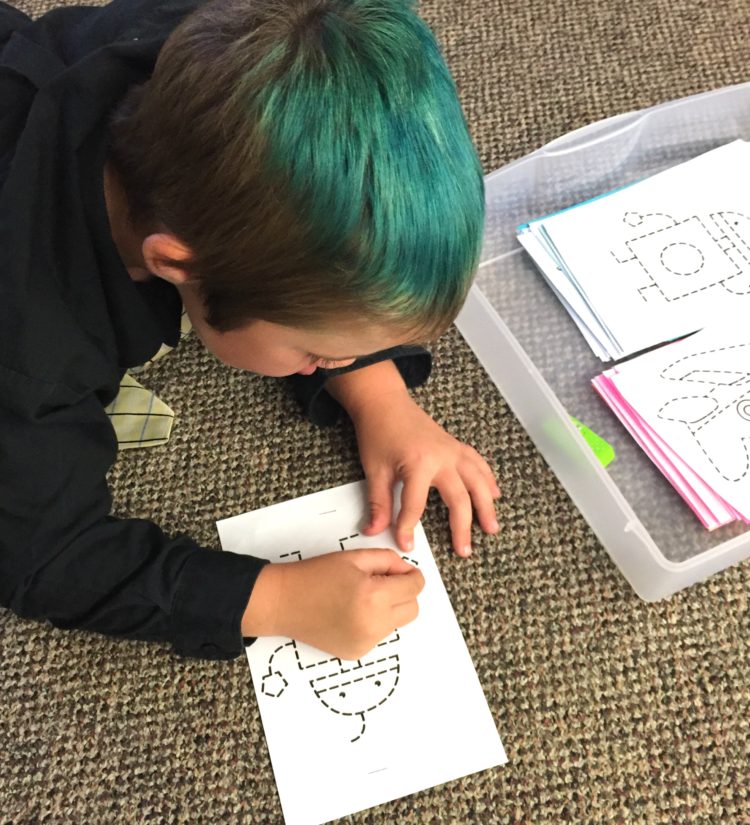
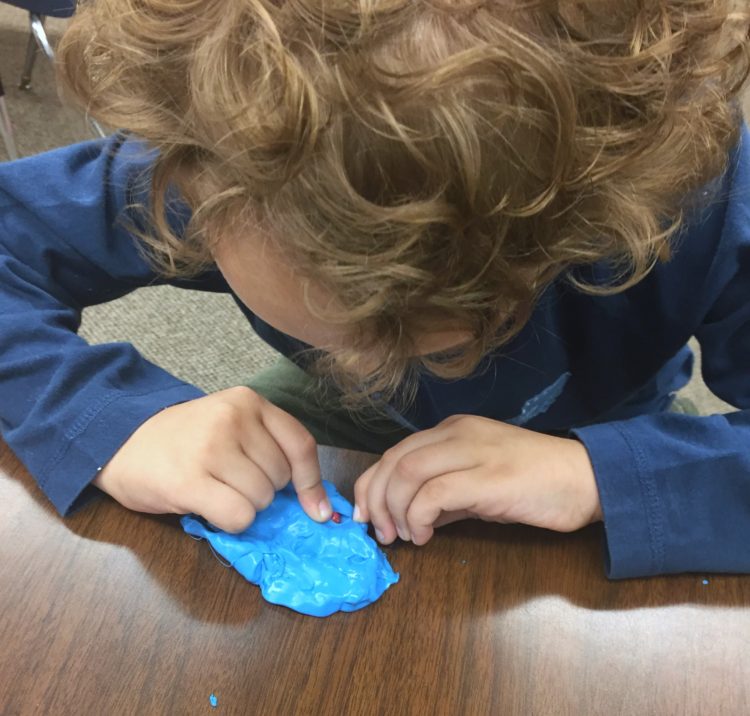
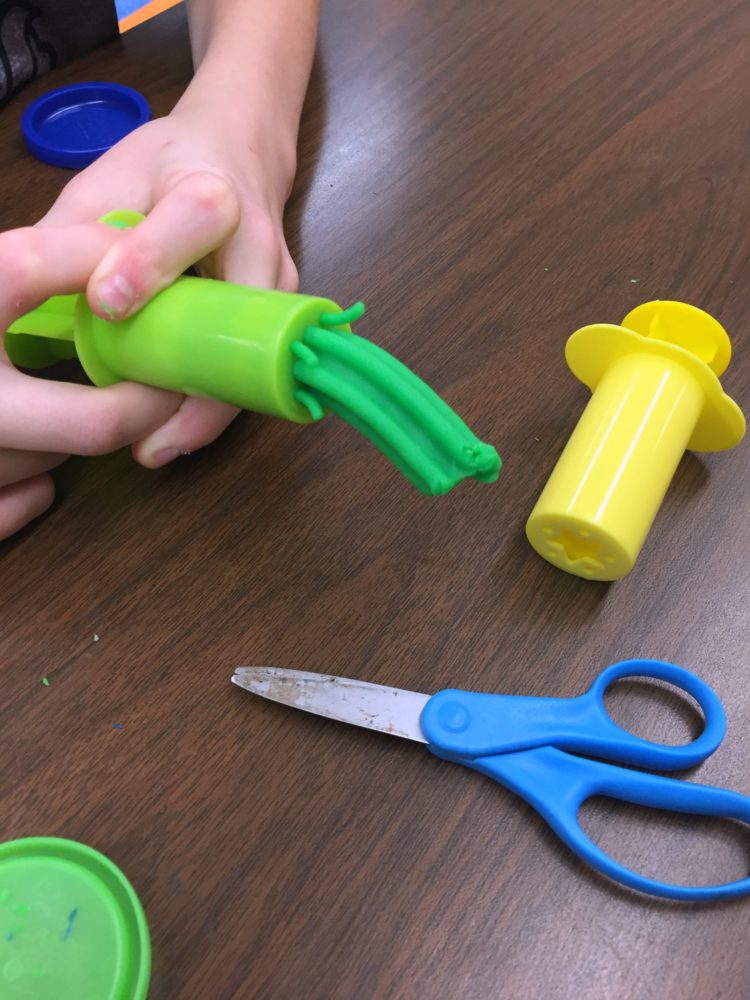
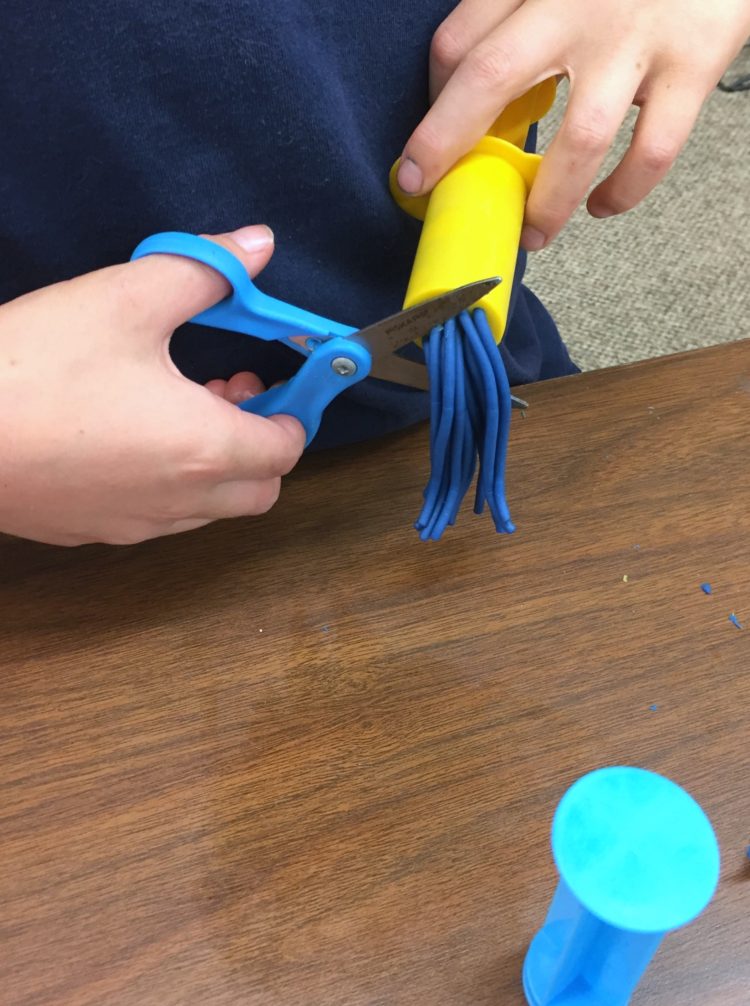
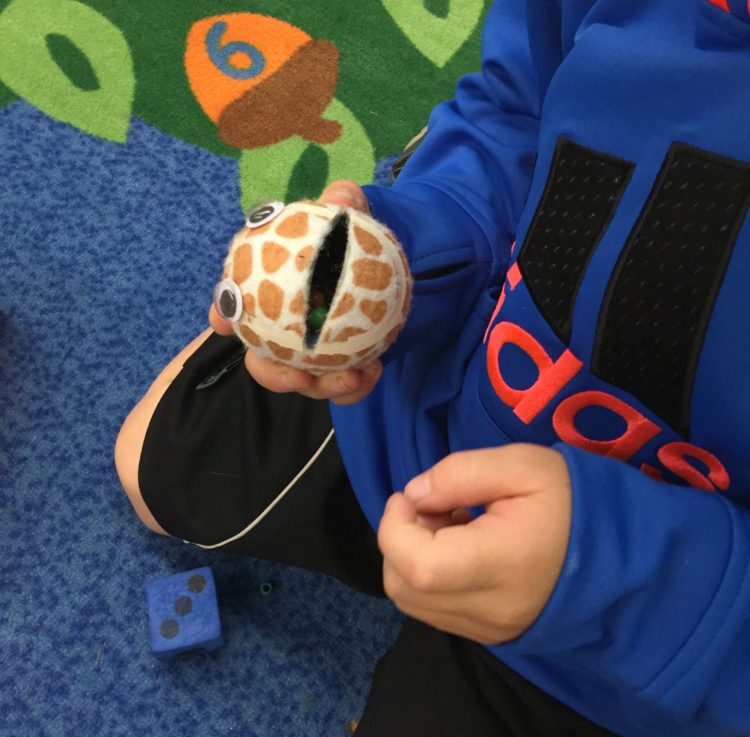


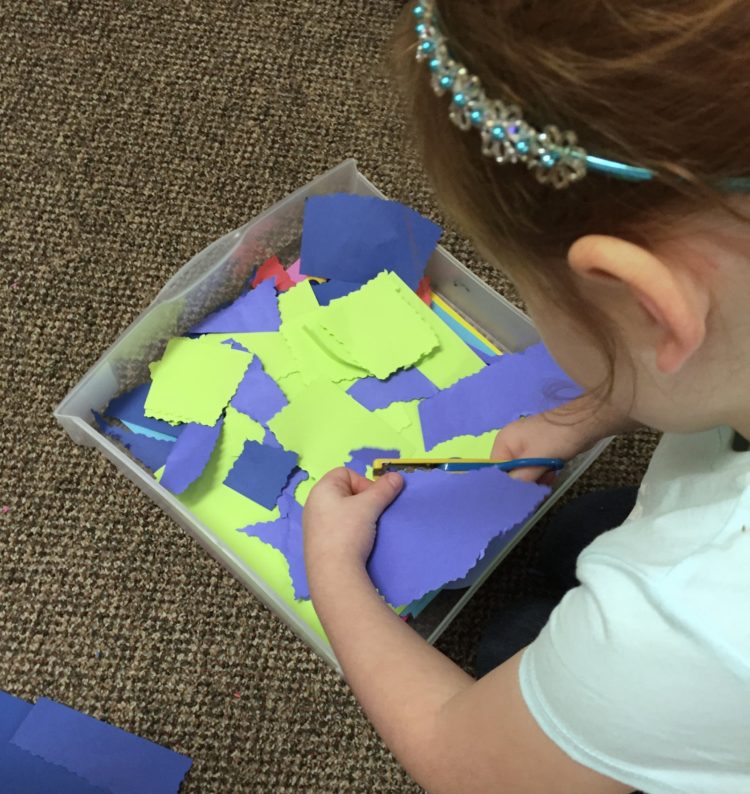





If you do these for morning stations, then what do you do for literacy, of math stations?
As I mentioned in my first post about morning work stations, these stations only last for about 15-20 as I’m taking attendance and working on notes from home and they are wandering in, using the restroom, making lunch choices and the like. I am not a big fan of paper pencil morning work. This is my answer to the problem of how to keep them engaged so I can get those first-thing-in-the-morning chores done. They absolutely love it.
Marsha
After two years of teaching Kindergarten and each year the kiddos arrive with terrible fine motor skills than the year before, I am doing away with paper-pencil morning work and starting these drawers! After spending the last week searching for the drawers and gathering all the items, I am ready to introduce them tomorrow! I am just wondering if you have a list of possible activities that seem to be your go to ones.
Well I like these to start the year out. I kind of change them as I get to know my kinders and what is engaging for them. With 15 boys, they love the nuts and bolts. But slowly I will incorporate more academic spins to these activities to add the bonus of practicing skills as well. Great question.
Marsha
how often do you rotate the kids to different bins and how often do you change out the bins?
If you look at my original post that I linked in this one, you’ll see that each student uses only one bin each morning. I change them out after 12 days or so. That’s also when they get a new partner.
Thanks for asking.
Marsha
Great post!!! Thank you! I already have many of the items in my Amazon cart ;).
I have many of these morning jobs for my kinders!!! I LOVE them and so do my kiddos!! It’s a fantastic way to start our day!!! Thanks for inspiring me with so many fantabulous ideas as I have returned to the classroom this year!!!
LOVE!!! When will you post your November morning tubs?
They’re up.
Are your kinders able to remove the drawers from the unit without it getting stuck on the little plastic stopper? I find them hard to remove and have thought about clipping that little plastic piece off but haven’t yet attempted it. What’s your secret?